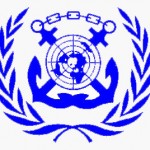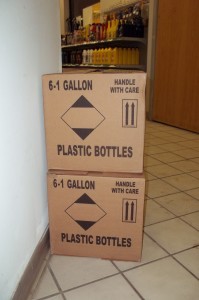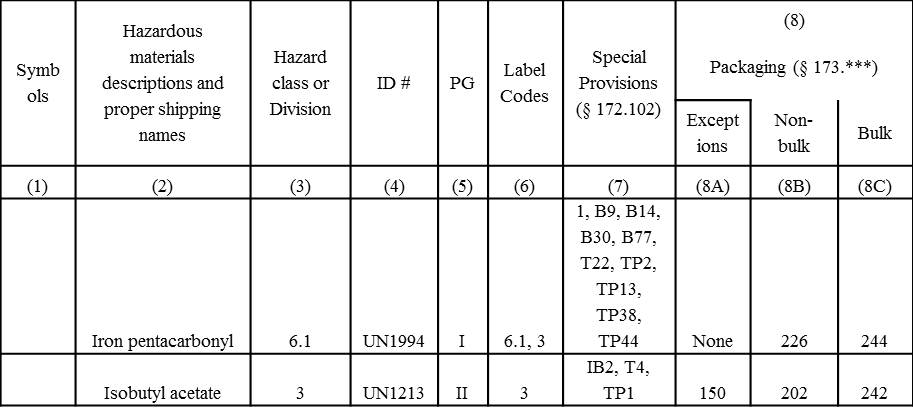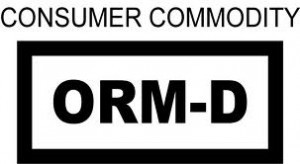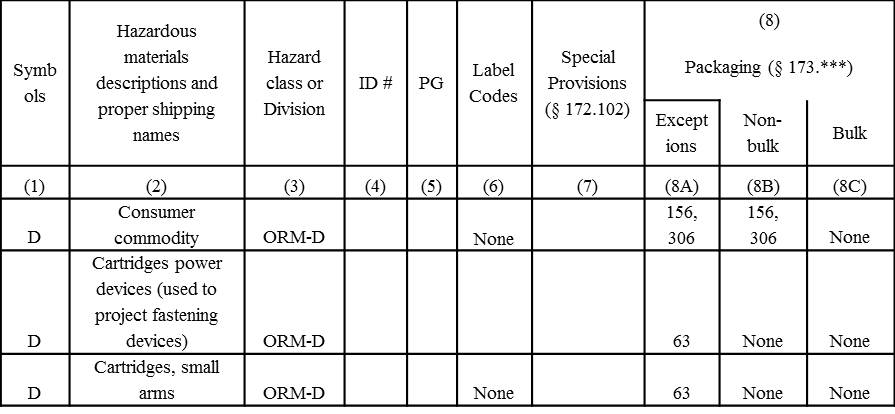A question from someone who found – and liked – my blog on June 26, 2015:
Dear Daniel,
I hope this message finds you well. I found your website online and I find it very helpful and educational. I haven’t found any other websites that explain HazMat transportation as simple as you do.
I checked your blog to see if you wrote about cosmetics and how they’re regulated by transportation, but I didn’t see posts about it. I was wondering if you can help me with my inquiry:
I would like to clarify how consumer skincare products that contain ethanol, other than perfumes or nail polish, are regulated for transportation if they have the following parameters:
- Product type = liquid containing a mixture of ingredients, including denatured alcohol (at 25% w/w).
- Product is considered flammable per flashpoint results.
- Product is distributed and sold at retail outlets.
- The product is packaged two ways:
- Saturated pad (presoaked pad) individually packed in packettes (inner packaging).
- Packettes are packed in multiple count in a paper carton (outer packaging).
- Saturated pad (presoaked pad) multiple packed in jar container (inner packaging).
- Jars are packed in a paper canister (outer packaging).
Would this product be unregulated for transportation (both air and ground) purposes given the way it’s packaged? I know that if it’s non bulk and bulk packaged in its liquid state – it will be regulated if it surpasses to a certain amount.
Thank you in advance for your help.
My reply, later that day (6.26.15):
That is a good question. I believe I have an answer for you.
If you have a Flammable Liquid as defined at 49 CFR 173.120, then you must ship it according to the Hazardous Material Regulations of the PHMSA/USDOT. However, the HMR contain exceptions to the burden of full regulation and what you describe above is – I believe – subject to one of those exceptions.
Found at 49 CFR 173.150(g), it reads in part:
(g) Limited quantities of retail products containing ethyl alcohol. (1) Beverages, food, cosmetics and medicines, medical screening solutions, and concentrates sold as retail products containing ethyl alcohol classed as a flammable liquid or flammable solid containing not more than 70% ethyl alcohol by volume for liquids, by weight for solids are excepted from the HMR provided that:
(i) For non-glass inner packagings:
(A) The volume does not exceed 16 fluid ounces in capacity for liquids; or
(B) For volumes greater than 16 fluid ounces but not exceeding 1 gallon the company name and the words “Contains Ethyl Alcohol” are marked on the package;
(C) Solids containing ethyl alcohol may be packaged in non-glass inner packagings not exceeding 1 pounds capacity;
(D) For weight greater than one pound up to 8 pounds the company name and the words “Contains Ethyl Alcohol” are marked on the package.
(ii) For glass inner packagings:
(A) The volume does not exceed 8 fluid ounces in capacity; or
(B) For volumes greater than 8 fluid ounces to 16 fluid ounces the company name and the words “Contains Ethyl Alcohol” are marked on the package;
(C) Solids containing ethyl alcohol may be packaged in glass inner packagings not exceeding 1⁄2 pound;
(D) For weight greater than 1⁄2 pound up to 1 pound the company name and the words “Contains Ethyl Alcohol” are marked on the package.
(iii) The net liquid contents of all inner packagings in any single outer packaging may not exceed 192 fluid ounces. The net solid contents of all inner packagings in any single outer packaging may not exceed 32 pounds. The gross weight of any single outer package shipped may not exceed 65 pounds; Inner packagings must secured and cushioned within the outer package to prevent breakage, leakage, and movement.
In sum, a Class 3 Flammable Liquid is not subject to the HMR of the PHMSA/USDOT when transported within the U.S. if it complies with the following. (shipments by air will probably require compliance with IATA which may differ but I believe will contain a similar exception):
- Meets definition of a Limited Quantity (no more than 66 pounds gross weight for outer package, and a few other requirements).
- A beverage, food, cosmetics, and medicines…
Sold as retail products. - Contain ethyl alcohol (aka Ethanol).
- No more than 70% ethyl alcohol.
- Meet limits for volume of inner packaging based on the container type (glass v. other, liquid v. solid).
- Meet volume and weight limits of paragraph (iii).
Given the information you provided and my brief review of the HMR, I believe that you will be able to ship this material in a manner that is not subject to the full HMR. However, you will need to meet certain packaging requirements.
Also, as indicated earlier, the Dangerous Goods Regulations of the International Air Transportation Association (IATA) may differ from PHMSA/USDOT. Learn more about ICAO/IATA dangerous goods regulations.
If you wish for a professionally researched opinion on this topic I can assist you under my Consulting Services.
Please don’t hesitate to contact me with any questions.
Dan
815.821.1550
The inquisitor’s response took a little while (August 6, 2015), but that was OK, I wasn’t in any rush:
Dear Daniel,
My sincere apologies for the late response and thank you so much for your help on this matter. This information was very helpful to me.
On another note, I’d like to inquire about your webinar offerings. I see that you offer one to Hazmat and Hazardous Waste Personnel, but I’m wondering if you have any specialized ones for regulatory personnel who’s more on the admin side and does not directly handle hazmat materials or work in a manufacturing environment.
Thank you for your help.
I’m happy to provide information about my training services any time, so on August 7th I replied:
Thank you for your reply.
Please contact me if you have any questions about my Webinar Training.
Thank you very much and please don’t hesitate to contact me with any questions.
